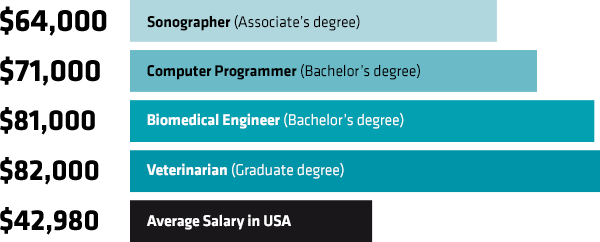

STEM field graduates coupled with decreasing foreign STEM talent to mitigate the supply shortage. Higher barriers to H-1B visa access is compounding the STEM shortage: there are low numbers of U.S. It has also inadvertently lowered the attractiveness of the United States as a workplace destination for immigrants, leaving no question as to why two out of five Americans surveyed by Emerson believe the shortage of STEM workers has officially reached a crisis level. The current administration’s executive order to “Buy American and Hire American,” which raised restrictions on H-1B visas, has made it increasingly difficult to recruit highly skilled foreign talent. Employers and firms lack access to foreign talent In other words, younger generations don’t see the value in STEM because they don’t understand it, and older generations haven’t completely explained it to them.

This disconnect is a major contributing factor to why interest in STEM fields is 18 percent lower amongst 15- to 17-year-olds than amongst 11- to 14-year-olds. While academics may love the term “STEM,” it may inadvertently be confusing youth to believe that the fields of science, technology, engineering, and mathematics are just four kinds of the same subject. It’s evident that there is an overarching consensus that younger generations don’t understand how STEM skills translate into real-life applications. The research also revealed that almost half of the students said they don’t know what kind of math jobs exist, and 76 percent reported not knowing what engineers do for work.

However, 64 percent of students rated creating video games for a career as “very fun,” and 54 percent think it would be “very fun” to earn a living in marine life. According to a Randstad North America survey, 52 percent of students ages 11 to 17 don’t know anyone with a job in STEM. STEM has a branding problem with younger generationsĪnother issue augmenting the shortage of STEM talent is the lack of visibility into these fields. If more young people were aware of these projections, they may become more inclined to pursue these fields in the future. A 2018 Winter survey from the National Association of Colleges and Employers reports that STEM fields have the four highest projected average starting salaries by Bachelor’s degree discipline. As a result, the candidate pool suffers in both quality and quantity, leaving recruiters scrambling to find the best talent for the right opportunities.īut it shouldn’t be this difficult to get kids interested in these fields. Employers are continuously searching for highly specialized skill sets that are often unmet by general education programs that most colleges teach their students. Students don’t see the value of STEM careersĭomestically, there is a lack of sufficient education in K-12 school systems as well as higher educational institutions informing future generations of the workforce about the value in STEM-related professions. In many cases, younger generations – especially females – are losing interest in pursuing careers in STEM before reaching their teen years. The shortage of STEM talent is, generally, the result of a double-edged sword of both domestic and foreign challenges. Leading causes of the STEM talent shortage Additionally, Bullhorn’s 2018 North American Staffing and Recruiting Trends Report found that 73 percent of firms serving manufacturing industries, and 65 percent of those in information technology and accounting, finance, and insurance fields listed skill shortages as one of their top challenges. The National Association of Manufacturing and Deloitte report that the United States will have to fill 3.5 million STEM jobs by 2025, with more than 2 million of them going unfilled because of the lack of highly skilled candidates in demand. This is especially true for science, technology, engineering, and mathematics (STEM) fields in particular. However, it may come as a surprise just how incredibly daunting the shortage will become in the next few years, according to predictions from researchers in the field. You may already be aware that employers from across the globe face the worst talent shortage in the 10 years since the Great Recession.


 0 kommentar(er)
0 kommentar(er)
